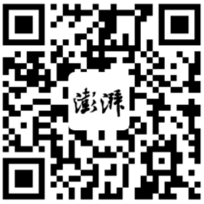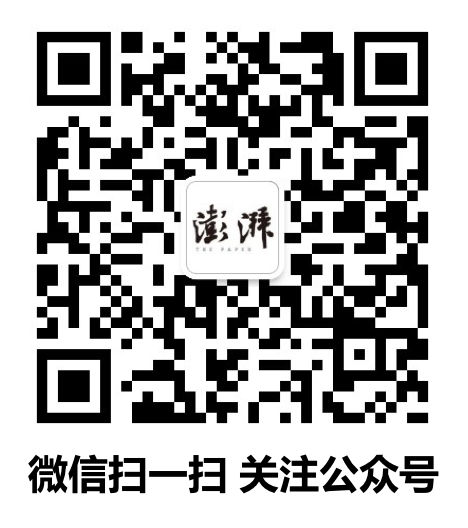- +1
双语深圳|Exploring the Chinese dragon in lunar tradit…
以下文章来源于EyeShenzhen ,作者EyeShenzhen
EyeShenzhen.
为深圳外籍人士服务的生活资讯平台。Help you find what's hot in Shenzhen.

甲辰龙年即将来临,在十二生肖中,龙对中国人有着特殊的意义。跟随布布,一起探索这种神话中的生物在中国文化中的地位。
Video by Wang Haolan
The Lunar New Year, also known as the Spring Festival, is a vibrant Chinese tradition. It is a moment of joyous celebration and fresh beginnings, representing the shift from one animal sign to the next in the Chinese zodiac. Tomorrow, we will step into the Year of the Dragon.
春节是中国最重要的传统节日之一。这是一个欢乐喜庆的时刻,也是一个新的开始,代表着中国十二生肖循环从一个生肖进入到下一个生肖。2024是中国的龙年。
In Chinese folklore, the dragon stands as a marvelous and auspicious being, and is a symbol of great power, good fortune, wisdom and health. The mythical creature has attributes belonging to nine other creatures: antlers resembling those of a stag, a head resembling that of a camel, eyes resembling those of a rabbit, a serpentine neck resembling that of a snake, a belly resembling that of a clam, scales resembling those of a carp, claws resembling those of an eagle, soles resembling those of a tiger, and ears resembling those of a cow.
在中国民间传说中,龙是一种神异而吉祥的生物,象征着强大的力量、好运、智慧和健康。这种神话中的动物是九种动物的综合体:角似鹿、头似驼、眼似兔、项似蛇、腹似蜃、鳞似鱼、爪似鹰、掌似虎、耳似牛。

It forms a fundamental contrast to the Western concept of a dragon, which is depicted as "a large aggressive animal with wings and a long tail, that can breathe out fire." Therefore, Chinese Americans had already translated the term "Chinese dragon" as "loong" to differentiate it from the Western portrayal of a dragon since the late Qing Dynasty (1644-1911).
这与西方文化中龙的形象形成了鲜明对比。在西方文化中,龙被描绘成 "长着翅膀和长尾巴,能喷火的大型攻击性动物"。因此,美籍华人早在晚清时期(1644-1911 年)就已将 "中国龙 "译为 "loong",以区别于西方龙的概念。

Dragon in Chinese mythology
中国神话中的龙
Ruler of weather and water
天气和水的统治者
In ancient China, life was predominantly agricultural, so the rain and the wind played an important role in people's lives. People believed there was something powerful controlling the rain and the thunder, and in Chinese mythology, the dragon was such a powerful beast that lived in rivers, lakes, and seas. It was used as a symbol of great power, a ruler and even of the emperor.
古代中国是农耕社会,雨水和风对人们的生活影响很大。人们相信有一种强大的力量控制着雨水和雷声;在中国神话中,龙是一种威猛的神兽,生活在河流、湖泊和海洋中。龙象征强大的力量,甚至是皇帝的象征。

Ancestor of the Chinese people
中华民族的祖先
It was said that thousands of years ago, Yandi (a legendary tribal leader) was born through his mother's telepathic interaction with a mighty dragon. With the help of the dragon and allied with Huangdi (a legendary tribal leader and, by some accounts, the grandson of a dragon), they opened the prelude to Chinese civilization. So, "emperors" Yandi and Huangdi were the ancestors of the Chinese people. It is said that the two emperors were immortalized as dragons before they ascended to heaven.
相传数千年前,炎帝(传说中的部落首领)是他母亲与一条强大的龙心灵感应而生。在龙的帮助下,他们与黄帝(传说中的部落首领,也有人说是龙的孙子)结盟,拉开了中华文明的序幕。因此,炎帝和黄帝是中华民族的祖先。据说,这两位帝王在升天之前是以龙的形象成仙的。
As time went by, Chinese people began to refer to themselves as "the descendants of Yandi and Huangdi," as well as "descendants of dragons."
随着时间的推移,中国人开始称自己为 "炎帝和黄帝的后裔 "以及 "龙的传人"。

Dragon in Chinese culture
中国文化中的龙
Dragons play an important role in Chinese culture, such as the zodiac, dragon dances, idioms, art, the dragon boat festival, festival decorations, films, legends, and literature. One can always find dragon elements whenever you are learning about Chinese culture.
龙在中国文化中扮演着重要角色,如十二生肖、舞龙、成语、艺术、端午节、节日装饰、电影、传说和文学。只要了解中国文化,总能找到龙的元素。
The Chinese zodiac Dragon
十二生肖: 龙
The Dragon is the fifth Chinese zodiac sign, part of the 12-animal cycle. People born in the years 1940, 1952, 1964, 1976, 1988, 2000, 2012, or 2024 belong to the Dragon zodiac sign, and are known as Dragons. People born in a year of the Dragon are believed to be confident, powerful, resolute, and have high self-esteem.
龙是十二生肖中的第五个生肖。1940年、1952年、1964年、1976年、1988年、2000年、2012年或2024年出生的人属龙。龙年出生的人被认为是自信、强大、果断、自尊心强的人。

Dragon dances
舞龙
Chinese dragons symbolize wisdom, power, good fortune, and wealth, so people perform dragon dances as a custom to welcome in good fortune and wealth.
中国的龙象征着智慧、力量、吉祥和财富,因此人们有舞龙迎福纳财的习俗。

Performers perform dragon dance at a dragon and lion dance competiton held in Hongqiao Park in Guangming District. Photo from Dute News
在光明区虹桥公园举办的舞龙舞狮比赛上,表演者表演舞龙。图片来自读特
In ancient times, when there was no rain for a long time, people prayed for rain with a dragon dance, and dragon dances after planting were also a way to pray against insect attacks. Nowadays, dragon dances are performed during festive occasions to chase away evil spirits and welcome in prosperous times.
在古代,久旱不雨时,人们会舞龙祈雨,播种后舞龙也是一种防虫祈福的方式。如今,舞龙在喜庆的日子里被用来驱邪迎祥。
Dragon in idioms
成语中的龙
Because the Chinese dragon represents great power and good fortune, there are many idioms related to dragons that are used to express good wishes and fine sentiments. Here are some of the most used ones:
龙在中国文化中代表着强大的力量和幸运,因此有很多成语都与龙有关,用来表达美好的祝愿和美好的情感。下面是一些最常用的成语:
卧虎藏龙 (wòhǔcánglóng): crouching tiger, hidden dragon, meaning talented individuals in hiding

One of director Ang Lee's most known works is "Crouching Tiger Hidden Dragon."
导演李安最著名的作品之一是《卧虎藏龙》。
龙马精神 (lónɡmǎjīnɡshén): dragon horse spirit, meaning to be full of a dragon's spirit (unrelenting, pioneering, confident, etc.) and horse's vigor
望子成龙 (wàngzǐchénglóng): to wish that your son becomes a dragon, referring to parents hoping for their kids to be successful
Dragon in Chinese art
中国艺术中的龙
Dragons in carvings or paintings are used to decorate buildings, particularly imperial ones. The Chinese dragon symbolized the sovereignty of emperors, and everything related to dragons was exclusively used for emperors' property during feudal times. In the Forbidden City, one can see Chinese dragon elements nearly everywhere: the nine sons of the dragon on the golden roofs, on the stone floors, the imperial chair decorations, wood sculptures on pillars, and handrails, etc.
雕刻或绘画中的龙被用来装饰建筑,尤其是皇室建筑。中国龙象征着帝王的权力,在封建时代,一切与龙有关的东西都是帝王专属。在故宫,中国龙的元素随处可见:金顶上和石地板上的九子龙纹、太师椅上的九子龙纹、柱子上的木雕、扶手上的九子龙纹......等等。

A vase with dragons among floral scrolls produced by the imperial klin in Jingdezhen City, Jiangxi Province during the Yongle period (1403-1424) of the Ming Dynasty. It is one of the exhibits of an ongoing dragon- and Spring Festival-themed exhibition at Hong Kong Palace Museum. Wang Haolan
明代永乐年间(1403-1424)江西省景德镇的御窑产出的一件以龙和花卉纹饰为主题的花瓶。该花瓶是香港故宫博物馆正在举办的龙年和春节主题展览的其中一件展品。王皓岚
It is suggested that the year of the Dragon will bring development, improvement, and abundance. It is the perfect time for rejuvenated beginnings and setting the foundation for long-term success. So Happy Chinese New Year and may all your wishes come true in the Year of the Dragon.
人们认为龙年会带来发展、进步和富足。龙年是万象更新的开始,也是为长期成功奠定基础的最佳时机。祝大家龙年快乐,心想事成。
原标题:《双语深圳|Exploring the Chinese dragon in lunar tradition 龙年说龙》
本文为澎湃号作者或机构在澎湃新闻上传并发布,仅代表该作者或机构观点,不代表澎湃新闻的观点或立场,澎湃新闻仅提供信息发布平台。申请澎湃号请用电脑访问http://renzheng.thepaper.cn。





- 报料热线: 021-962866
- 报料邮箱: news@thepaper.cn
互联网新闻信息服务许可证:31120170006
增值电信业务经营许可证:沪B2-2017116
© 2014-2024 上海东方报业有限公司




